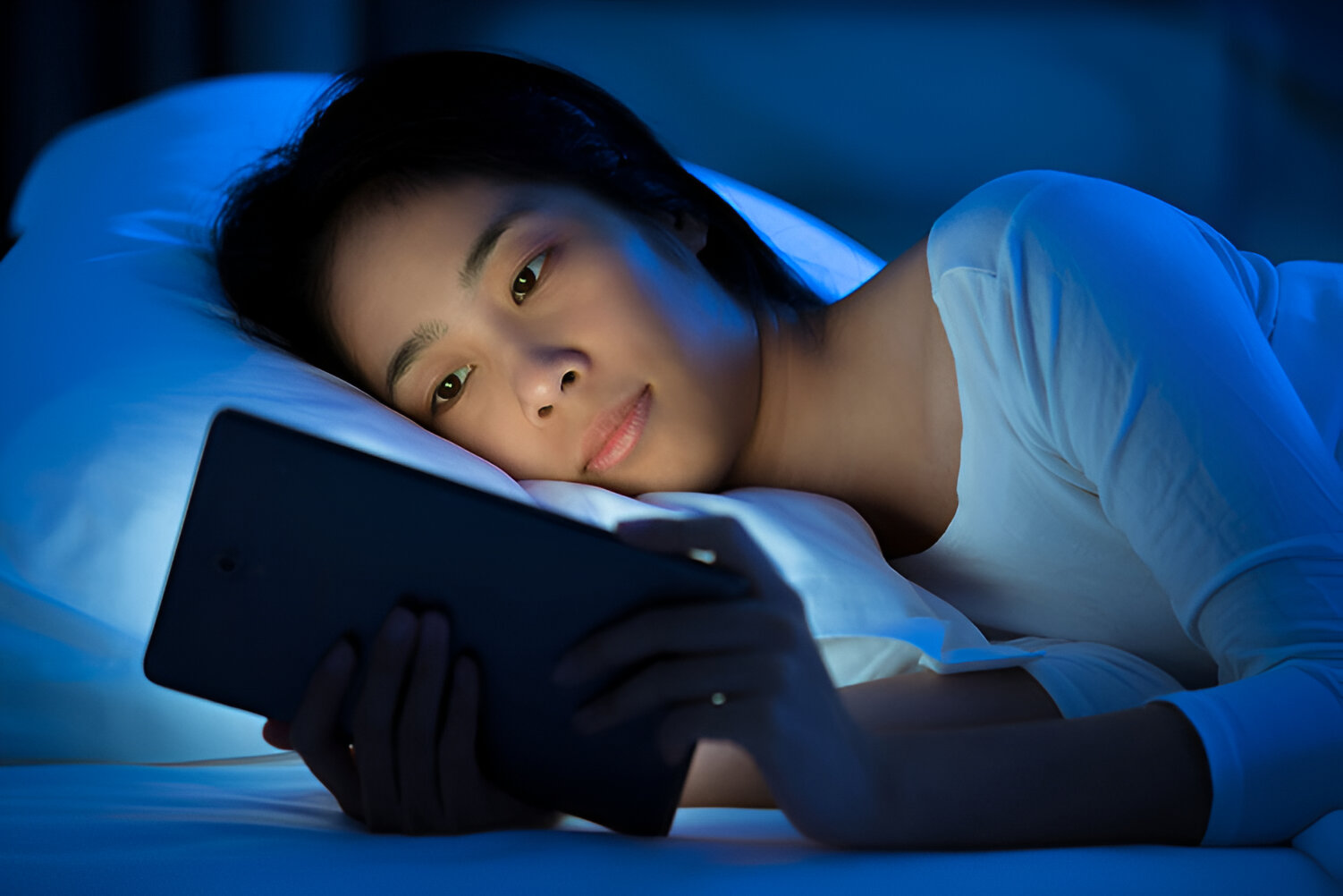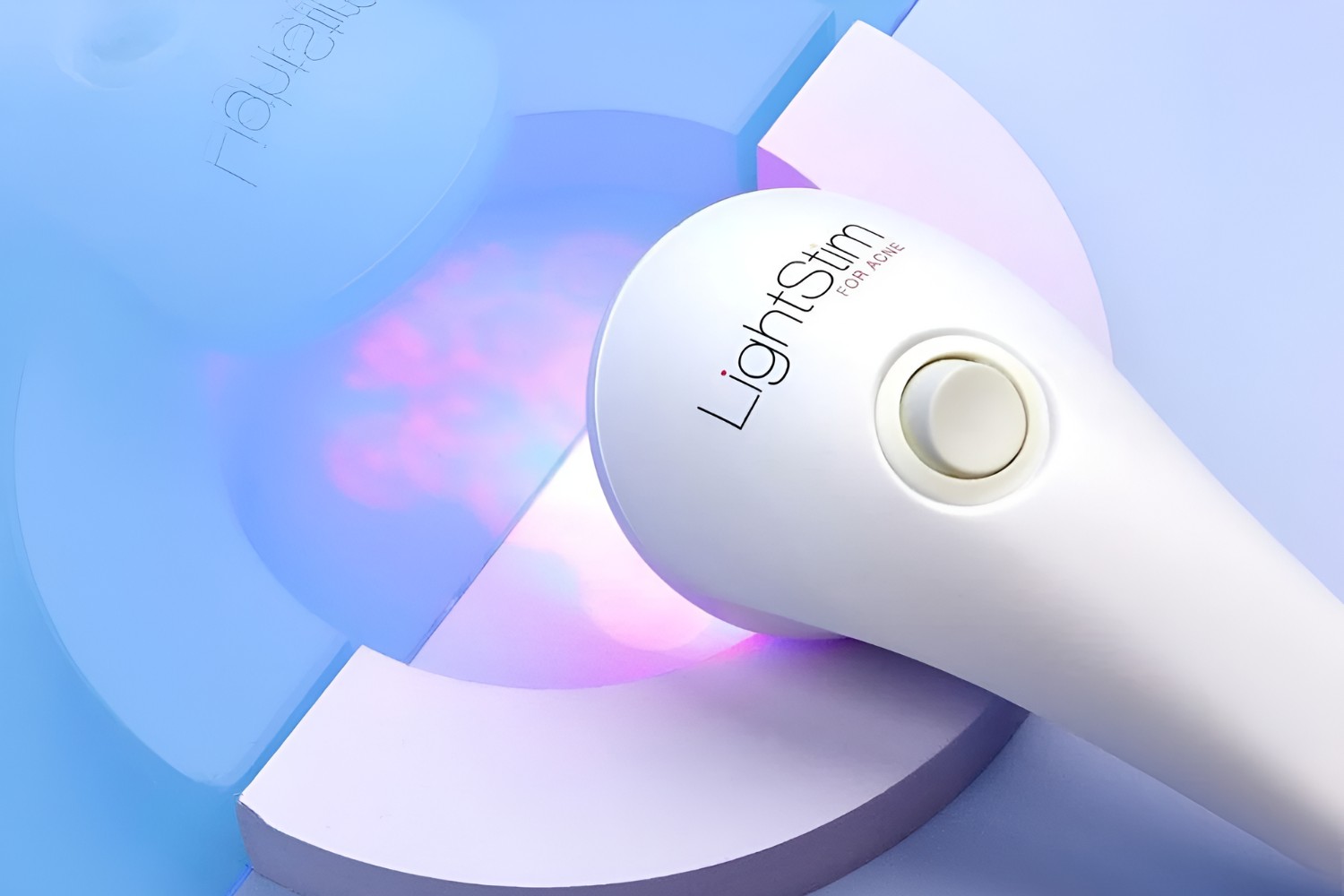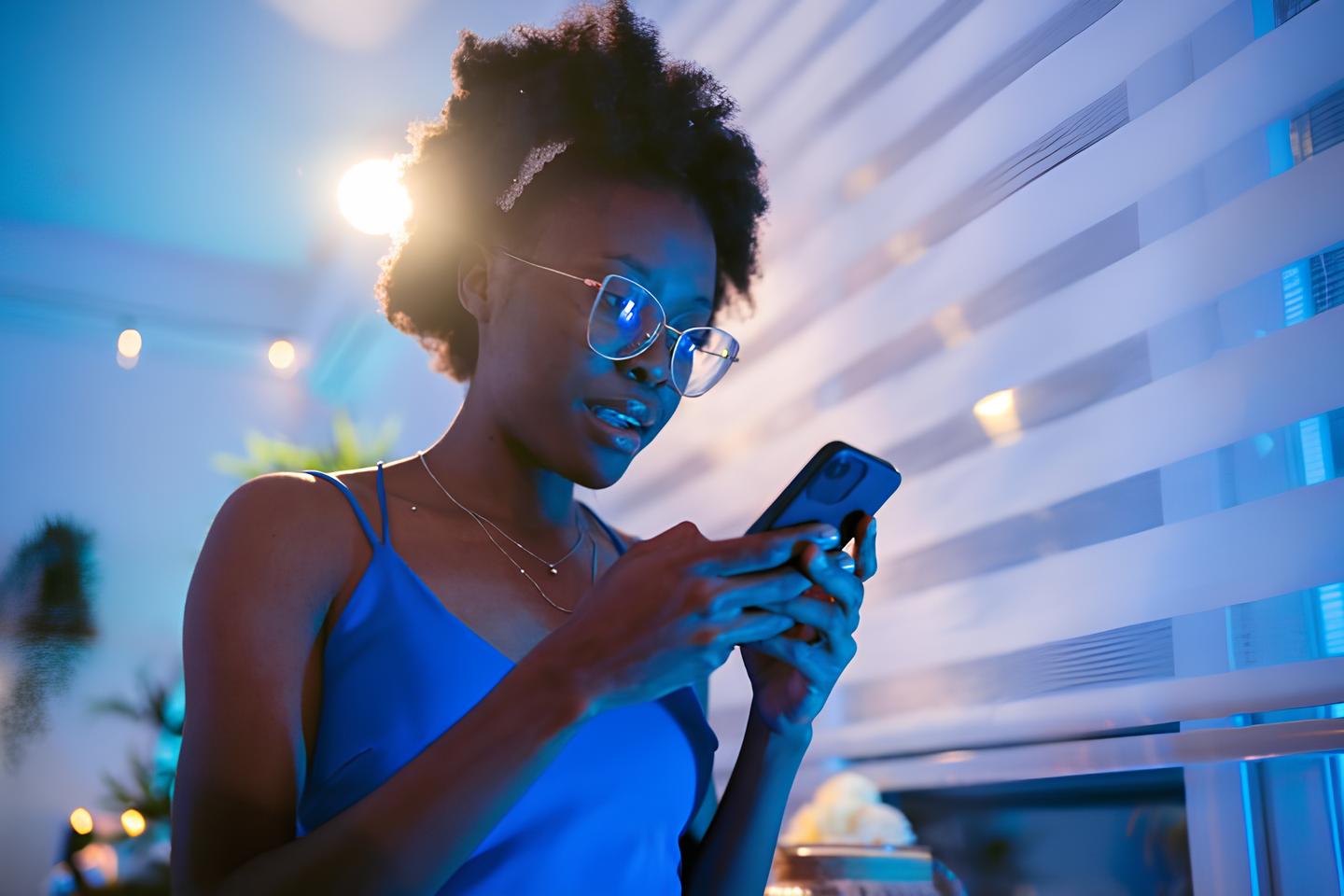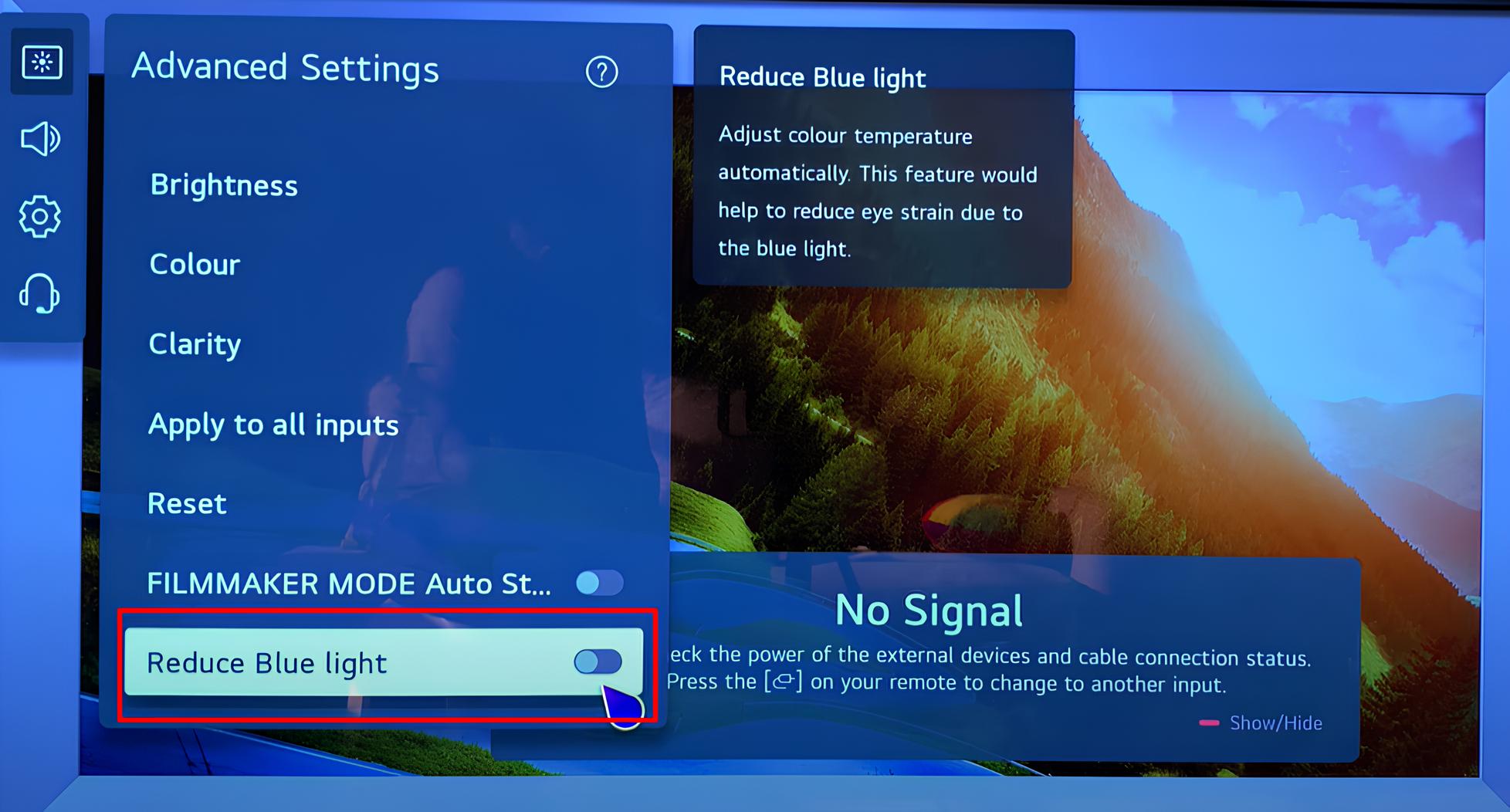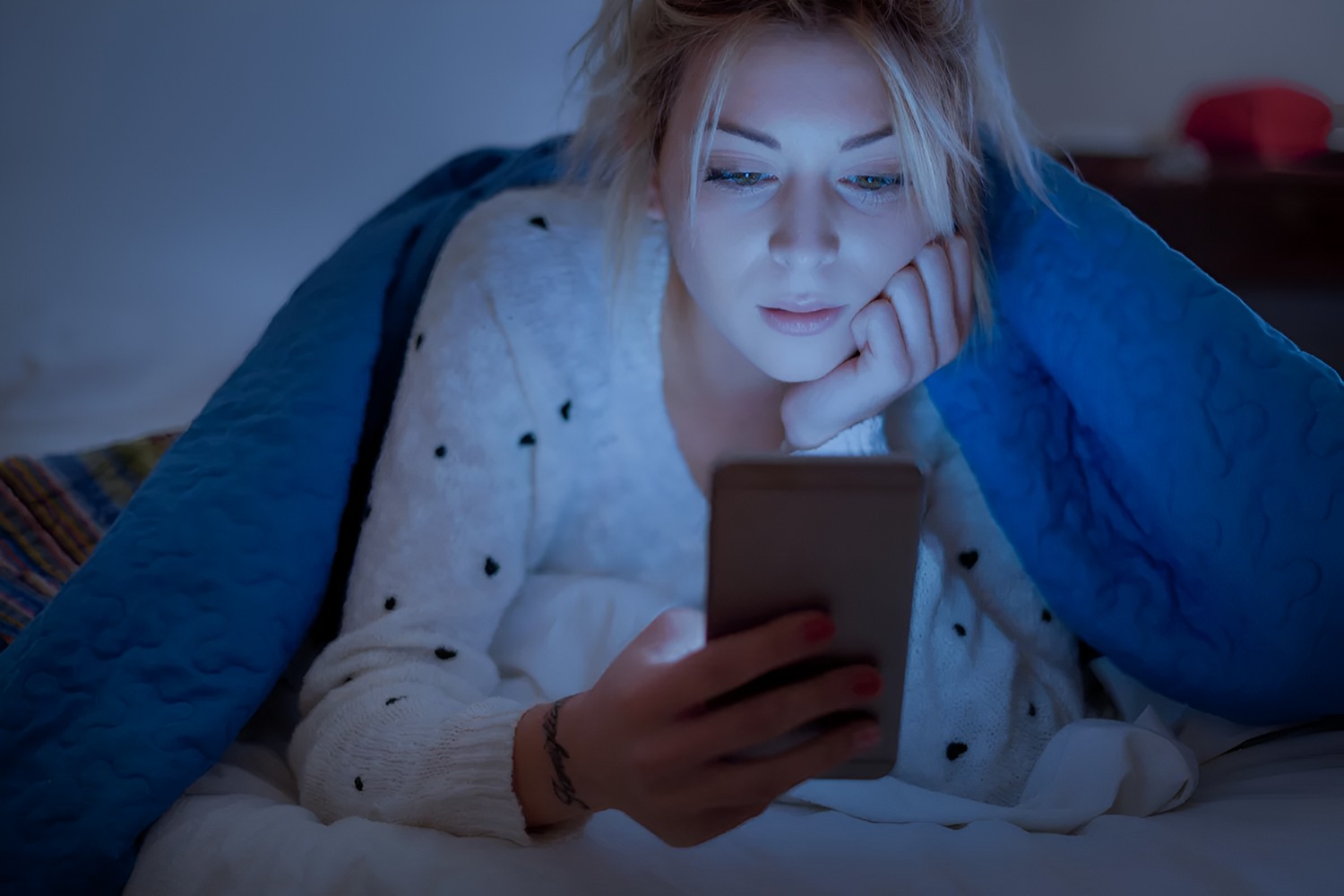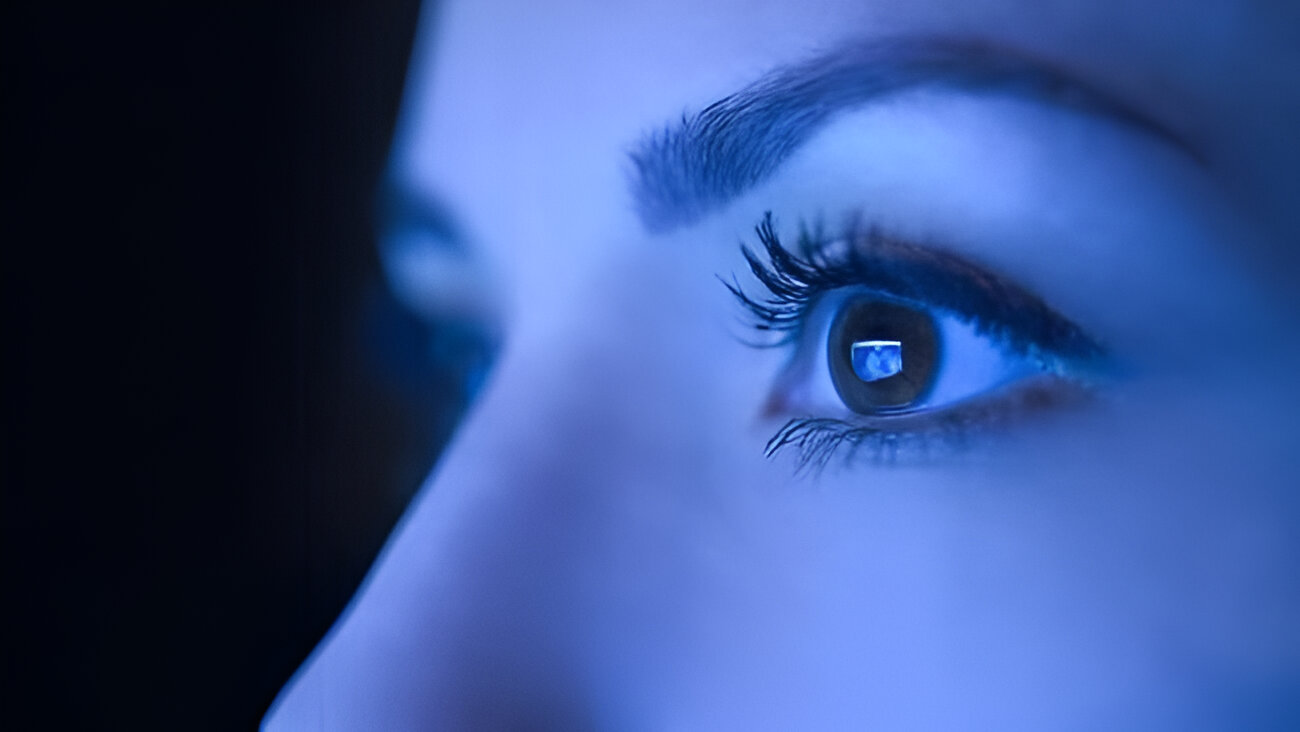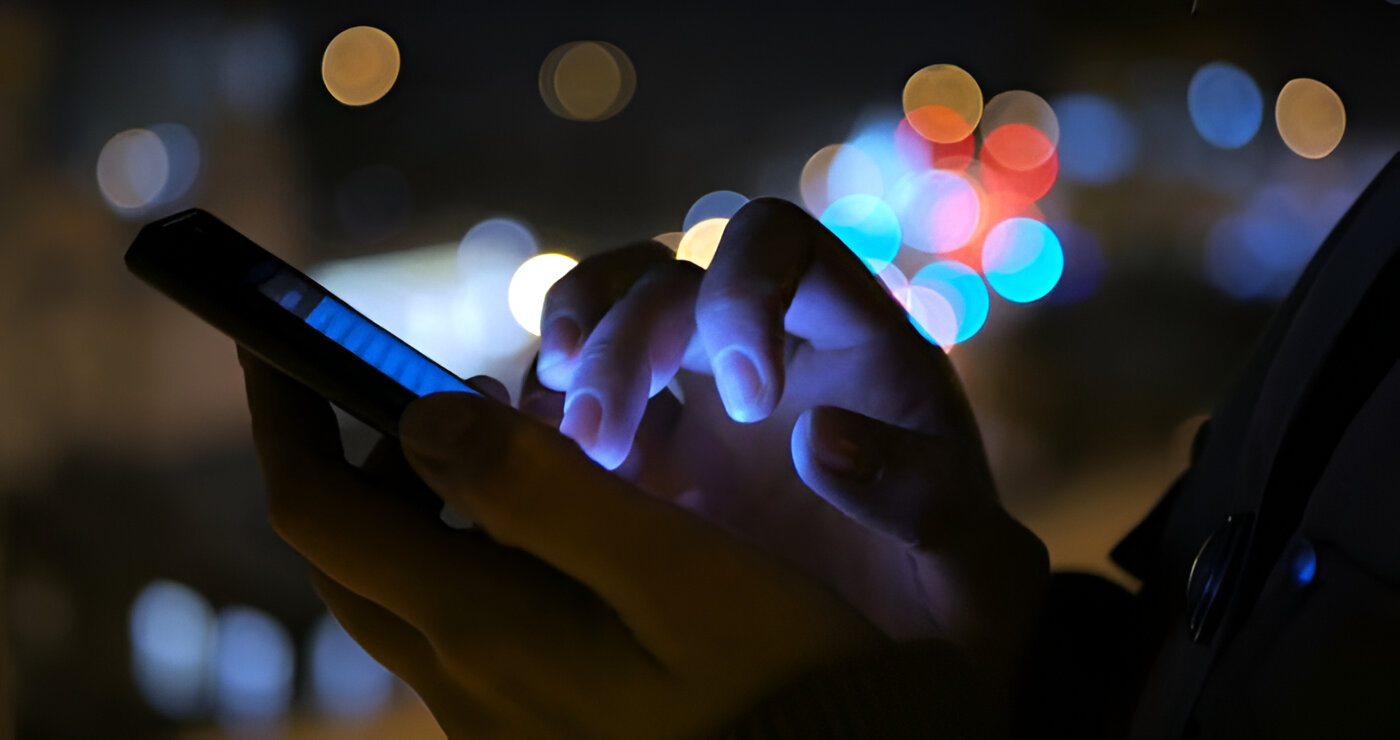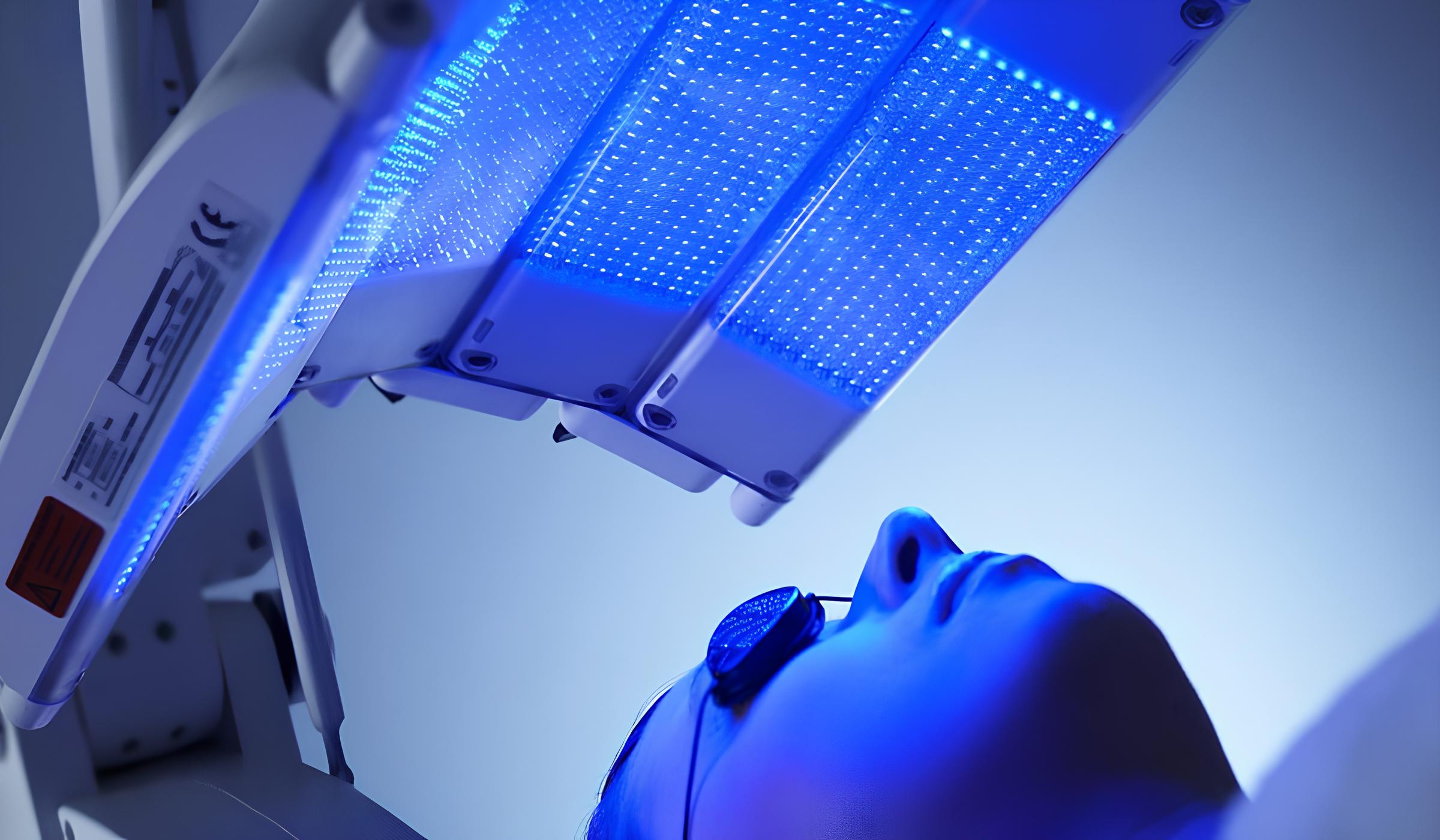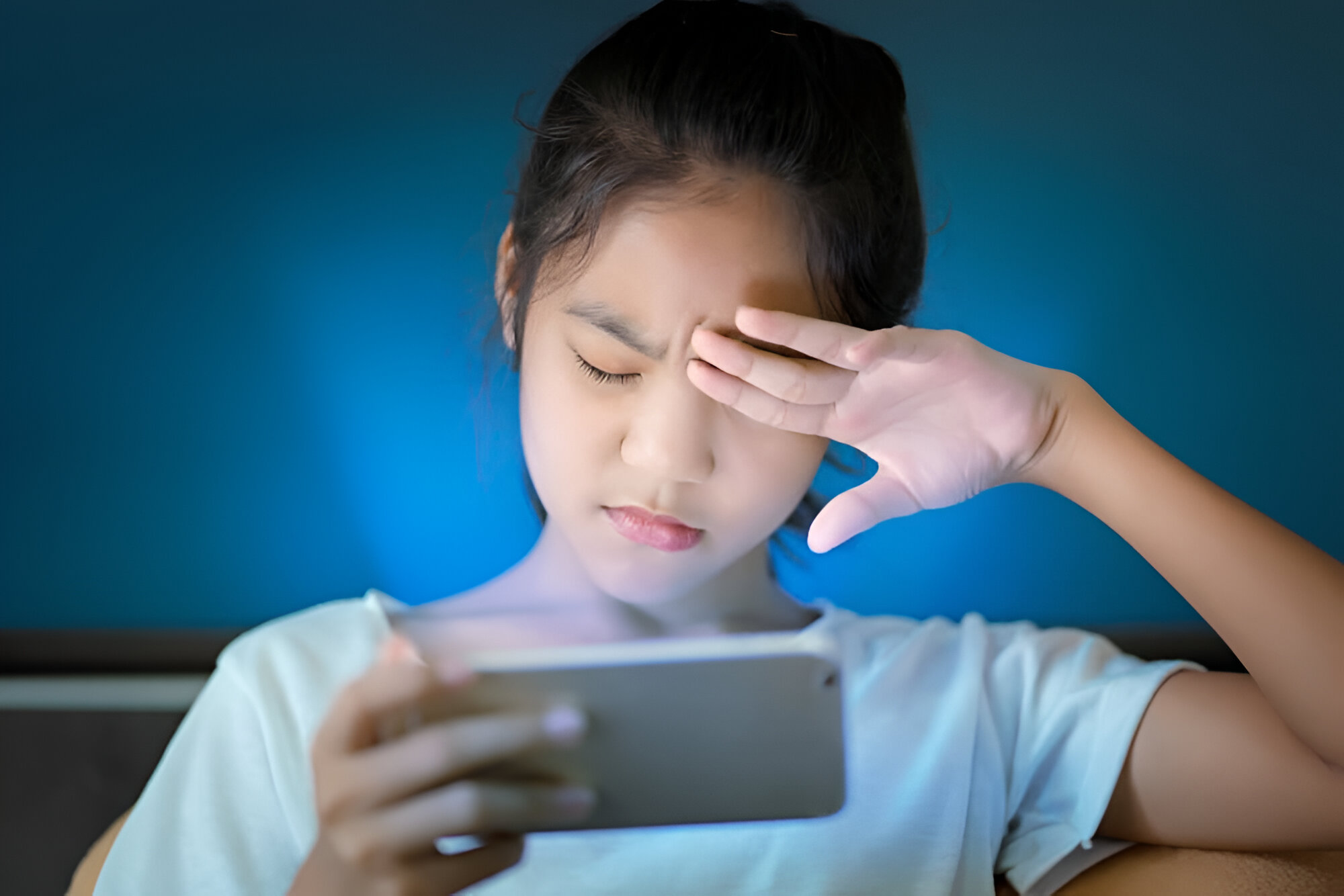Introduction
In today's digital age, our lives are intricately intertwined with technology. We spend a significant portion of our waking hours in front of screens, be it smartphones, tablets, computers, or televisions. While this technological advancement has undoubtedly revolutionized the way we live, work, and communicate, it has also introduced a new concern: the impact of blue light on our sleep.
The prevalence of blue light-emitting devices has raised questions about their potential effects on our sleep patterns and overall well-being. As we delve into the intricacies of this topic, it becomes imperative to understand the nature of blue light and its relationship with our sleep cycles.
The human body operates on a delicate balance, finely attuned to the natural rhythms of day and night. This balance is governed by a complex internal clock known as the circadian rhythm, which regulates our sleep-wake cycles, hormone production, and various physiological processes. However, the pervasive presence of artificial sources of blue light has the potential to disrupt this delicate equilibrium.
In this article, we will explore the science behind blue light, its impact on sleep, and practical strategies to mitigate its effects. By gaining a deeper understanding of the interplay between blue light and our biological mechanisms, we can empower ourselves to make informed choices that promote restful and rejuvenating sleep.
As we embark on this exploration, it is essential to approach the topic with an open mind, ready to absorb the insights that emerge from the intersection of science, technology, and human well-being. By shedding light on the nuances of blue light and its implications for our sleep quality, we can equip ourselves with the knowledge needed to navigate the modern world while safeguarding our essential need for restorative sleep.
What is Blue Light?
Blue light is a specific portion of the visible light spectrum with a shorter wavelength and higher energy than other visible light wavelengths. It is naturally present in sunlight and plays a crucial role in regulating our circadian rhythm, which governs our sleep-wake cycles.
In the modern context, blue light exposure has significantly increased due to the widespread use of digital devices such as smartphones, tablets, computers, and LED lighting. These devices emit artificial blue light, exposing us to higher levels of this wavelength than ever before.
The impact of blue light on our eyes and overall well-being has garnered increasing attention from researchers and health professionals. When we are exposed to blue light, particularly in the evening and nighttime hours, it can interfere with our natural sleep patterns. This occurs because blue light suppresses the production of melatonin, a hormone that signals the body to prepare for sleep.
Furthermore, the pervasive nature of blue light exposure can lead to symptoms such as digital eye strain, which includes discomfort, dryness, and fatigue in the eyes after extended screen time. This phenomenon has become a common concern as individuals of all ages spend more time engaging with digital devices.
Understanding the properties of blue light is essential for comprehending its potential impact on our well-being. By recognizing the sources of blue light and its effects on our physiology, we can take proactive measures to mitigate its disruptive influence on our sleep and overall health.
As we delve deeper into the intricacies of blue light and its implications for our daily lives, it becomes evident that fostering awareness and adopting strategies to manage blue light exposure are pivotal steps towards nurturing a balanced and harmonious relationship with technology while prioritizing our sleep quality and overall wellness.
How Does Blue Light Affect Your Sleep?
Blue light exposure has a profound impact on the body's natural sleep-wake cycle, primarily due to its influence on the production of melatonin, a hormone that regulates sleep. When we are exposed to blue light, particularly in the evening and nighttime hours, it can disrupt the body's internal clock, leading to difficulties in falling asleep and achieving restful slumber.
The human body's circadian rhythm is intricately linked to the daily cycle of light and darkness. Exposure to natural light during the day helps regulate this internal clock, promoting alertness and cognitive function. However, in the evening, the body's sensitivity to light changes, signaling the onset of the sleep phase. This is where the impact of blue light becomes significant.
Artificial sources of blue light, such as smartphones, tablets, computers, and televisions, emit high levels of this stimulating wavelength. When we engage with these devices, especially in the hours leading up to bedtime, the exposure to blue light can suppress the production of melatonin. This suppression disrupts the body's natural transition to sleep, leading to difficulties in falling asleep and experiencing restorative rest.
Moreover, the prolonged exposure to blue light can shift the body's circadian rhythm, causing a delay in the onset of sleep. This can result in a later bedtime and a subsequent reduction in the overall duration of sleep, impacting the body's ability to undergo essential restorative processes during the night.
In addition to its direct influence on melatonin production and sleep timing, blue light exposure can also contribute to the experience of digital eye strain. Prolonged screen time, particularly in environments with artificial lighting, can lead to symptoms such as eye discomfort, dryness, and fatigue, further exacerbating the challenges associated with sleep disturbances.
The cumulative effect of blue light exposure on sleep quality underscores the need to address this issue proactively. By understanding the mechanisms through which blue light affects sleep, individuals can implement strategies to minimize its impact and optimize their sleep environment. From adjusting screen settings to incorporating technology-free periods before bedtime, there are various practical approaches to mitigate the disruptive effects of blue light on sleep.
As we navigate the modern landscape of technology and its implications for sleep, the insights into the intricate relationship between blue light and our sleep patterns empower us to make informed choices. By recognizing the multifaceted impact of blue light on sleep quality, we can cultivate a balanced approach to technology usage while prioritizing the restorative power of a good night's sleep.
The Role of Melatonin
Melatonin, often referred to as the "sleep hormone," plays a pivotal role in regulating the body's circadian rhythm and promoting restful sleep. Produced by the pineal gland in response to darkness, melatonin serves as a biological signal that communicates the transition to the sleep phase, aligning our internal clock with the natural cycle of day and night.
The secretion of melatonin is intricately linked to light exposure, with its production increasing in response to darkness and decreasing in response to light. This delicate balance is essential for synchronizing the body's sleep-wake cycles with the external environment, ensuring optimal periods of wakefulness and rest.
In the context of blue light exposure, the role of melatonin becomes particularly significant. Artificial sources of blue light, such as electronic devices and LED lighting, can disrupt the body's natural melatonin production. When individuals engage with these devices, especially during the evening and nighttime hours, the exposure to blue light suppresses the release of melatonin, delaying the onset of sleep and compromising sleep quality.
Furthermore, the impact of blue light on melatonin extends beyond its immediate effects on sleep. Research has indicated that prolonged disruption of melatonin production, often stemming from consistent exposure to blue light in the evening, may have broader implications for overall health. Melatonin is involved in various physiological processes, including immune function, antioxidant activity, and regulation of the body's internal clock. As such, its suppression due to blue light exposure can potentially influence these essential functions, highlighting the far-reaching consequences of disrupted melatonin levels.
Understanding the intricate interplay between blue light, melatonin, and sleep underscores the significance of addressing blue light exposure to safeguard the body's natural sleep mechanisms. By adopting strategies to minimize blue light exposure in the hours leading up to bedtime, individuals can support the optimal production of melatonin, facilitating a smoother transition to sleep and enhancing overall sleep quality.
As we navigate the complexities of modern living, the appreciation of melatonin's role in sleep regulation serves as a catalyst for informed action. By acknowledging the impact of blue light on melatonin production and its broader implications, individuals can proactively cultivate an environment conducive to restful sleep, nurturing the body's innate capacity for rejuvenation and well-being.
Ways to Minimize the Impact of Blue Light on Sleep
-
Adjust Screen Settings: Many electronic devices offer features to reduce blue light emissions, such as night mode or blue light filters. Activating these settings in the evening can help mitigate the impact of blue light on melatonin production, creating a more sleep-friendly screen environment.
-
Utilize Blue Light Blocking Glasses: Specialized glasses designed to block blue light can be worn during evening screen time. These glasses filter out a significant portion of blue light, reducing its disruptive effects on melatonin and promoting a more seamless transition to sleep.
-
Limit Screen Time Before Bed: Establishing a technology-free period before bedtime allows the body to naturally wind down and prepare for sleep without the interference of blue light exposure. Engaging in relaxing activities such as reading, gentle stretching, or practicing mindfulness can further enhance this wind-down period.
-
Opt for Warm-Toned Lighting: In living spaces and bedrooms, opting for warm-toned lighting, such as amber or red-hued bulbs, can create a soothing ambiance while minimizing exposure to stimulating blue light. This subtle adjustment supports a sleep-conducive environment, signaling the body to ease into the restorative phase of sleep.
-
Create a Sleep-Friendly Environment: Implementing a sleep-friendly environment involves optimizing factors such as room darkness, comfortable bedding, and a cool, quiet atmosphere. By prioritizing these elements, individuals can enhance their sleep quality and mitigate the disruptive impact of blue light on their nightly rest.
-
Establish a Consistent Sleep Schedule: Maintaining a consistent sleep schedule supports the body's natural circadian rhythm, reinforcing the signals that regulate sleep-wake cycles. By adhering to a regular sleep routine, individuals can enhance their overall sleep quality and minimize the potential disruptions caused by blue light exposure.
-
Explore Blue Light Dimming Apps: Various applications are available to adjust the color temperature and brightness of screens, reducing blue light emissions during evening hours. These apps offer customizable settings to align screen lighting with the body's natural sleep cues, fostering a more harmonious transition to bedtime.
-
Prioritize Outdoor Time During the Day: Exposure to natural light during the day supports the body's circadian rhythm, reinforcing its sensitivity to the natural cycle of light and darkness. Spending time outdoors and engaging in daytime activities can enhance the body's readiness for restful sleep, counteracting the potential impact of evening blue light exposure.
By integrating these strategies into daily routines and sleep environments, individuals can proactively minimize the impact of blue light on their sleep, fostering a more harmonious relationship with technology while prioritizing restful and rejuvenating sleep.
Conclusion
In the ever-evolving landscape of technology and its pervasive integration into our daily lives, the impact of blue light on our sleep quality has emerged as a significant consideration. The intricate interplay between artificial sources of blue light and our body's natural sleep-wake cycles underscores the need for proactive measures to mitigate its disruptive effects. As we navigate this terrain, the convergence of scientific insights and practical strategies illuminates a path towards fostering a balanced relationship with technology while safeguarding our essential need for restorative sleep.
The awareness of blue light's potential to influence our sleep quality serves as a catalyst for informed action. By understanding the mechanisms through which blue light affects our physiology, individuals can implement practical strategies to minimize its impact. From adjusting screen settings and utilizing blue light blocking glasses to establishing technology-free periods before bedtime, there are various avenues through which we can cultivate a more sleep-friendly environment amidst the prevalence of digital devices.
Furthermore, the role of melatonin, the "sleep hormone," unveils the profound implications of blue light on our biological mechanisms. Recognizing the significance of melatonin in regulating our circadian rhythm underscores the importance of supporting its optimal production through mindful management of blue light exposure. By embracing warm-toned lighting, creating a sleep-conducive environment, and prioritizing outdoor time during the day, individuals can harmonize their daily routines with the body's natural sleep cues, fostering a seamless transition to restful slumber.
As we embark on this journey towards optimizing our sleep quality in the digital age, the integration of these strategies into our daily lives empowers us to reclaim control over our sleep environment. By embracing a consistent sleep schedule and exploring innovative solutions such as blue light dimming apps, individuals can proactively minimize the disruptive effects of blue light, nurturing a balanced and harmonious relationship with technology.
In essence, the insights garnered from understanding the impact of blue light on our sleep quality enable us to make informed choices that prioritize our well-being. By acknowledging the nuances of this relationship and embracing practical solutions, we can navigate the modern landscape of technology while safeguarding our essential need for restorative sleep. This journey towards harmonizing our interaction with technology and nurturing our sleep quality is a testament to our capacity to adapt, evolve, and prioritize the fundamental elements of our well-being in an ever-changing world.







